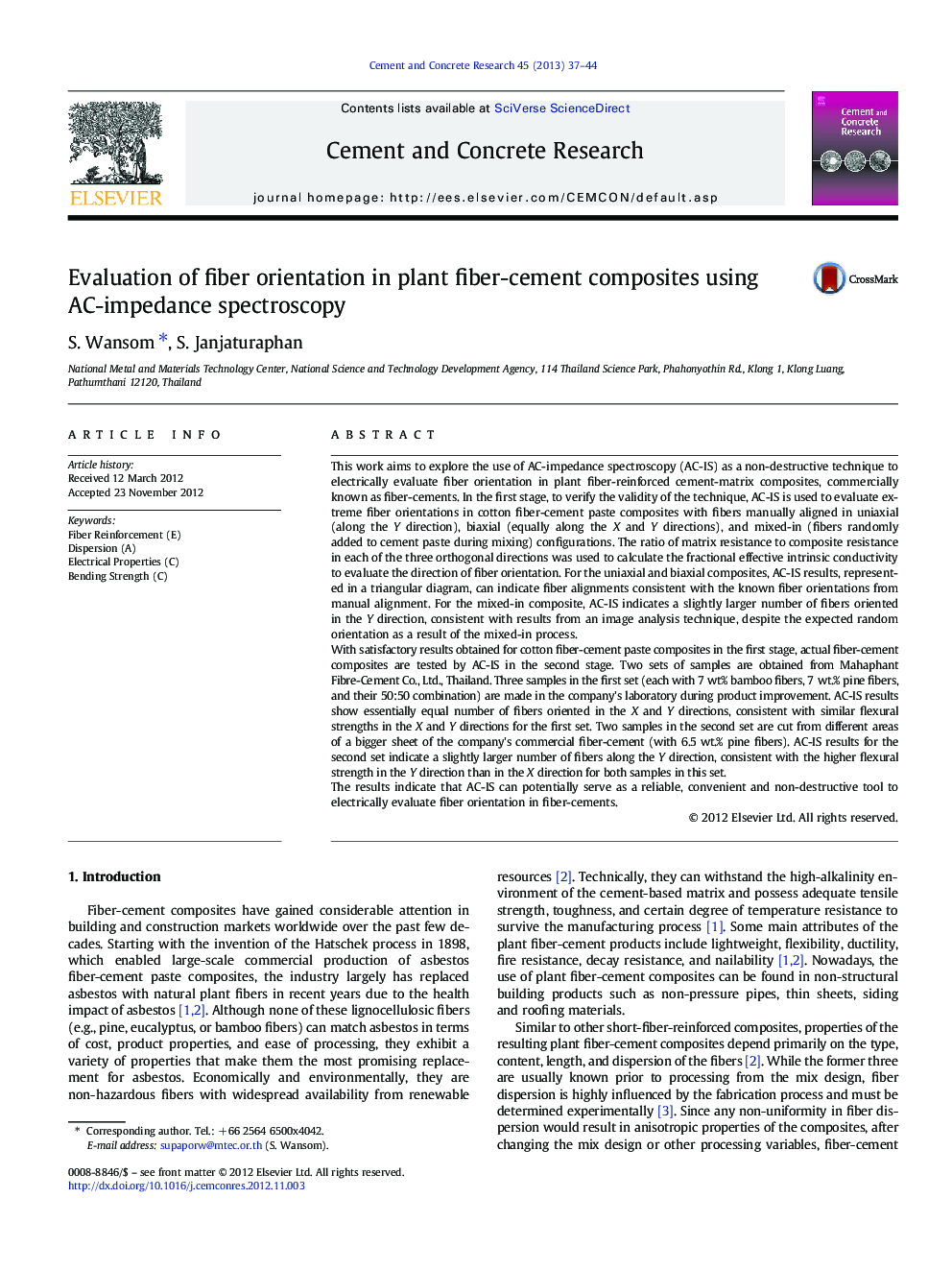| Article ID | Journal | Published Year | Pages | File Type |
|---|---|---|---|---|
| 1456665 | Cement and Concrete Research | 2013 | 8 Pages |
This work aims to explore the use of AC-impedance spectroscopy (AC-IS) as a non-destructive technique to electrically evaluate fiber orientation in plant fiber-reinforced cement-matrix composites, commercially known as fiber-cements. In the first stage, to verify the validity of the technique, AC-IS is used to evaluate extreme fiber orientations in cotton fiber-cement paste composites with fibers manually aligned in uniaxial (along the Y direction), biaxial (equally along the X and Y directions), and mixed-in (fibers randomly added to cement paste during mixing) configurations. The ratio of matrix resistance to composite resistance in each of the three orthogonal directions was used to calculate the fractional effective intrinsic conductivity to evaluate the direction of fiber orientation. For the uniaxial and biaxial composites, AC-IS results, represented in a triangular diagram, can indicate fiber alignments consistent with the known fiber orientations from manual alignment. For the mixed-in composite, AC-IS indicates a slightly larger number of fibers oriented in the Y direction, consistent with results from an image analysis technique, despite the expected random orientation as a result of the mixed-in process.With satisfactory results obtained for cotton fiber-cement paste composites in the first stage, actual fiber-cement composites are tested by AC-IS in the second stage. Two sets of samples are obtained from Mahaphant Fibre-Cement Co., Ltd., Thailand. Three samples in the first set (each with 7 wt% bamboo fibers, 7 wt.% pine fibers, and their 50:50 combination) are made in the company's laboratory during product improvement. AC-IS results show essentially equal number of fibers oriented in the X and Y directions, consistent with similar flexural strengths in the X and Y directions for the first set. Two samples in the second set are cut from different areas of a bigger sheet of the company's commercial fiber-cement (with 6.5 wt.% pine fibers). AC-IS results for the second set indicate a slightly larger number of fibers along the Y direction, consistent with the higher flexural strength in the Y direction than in the X direction for both samples in this set.The results indicate that AC-IS can potentially serve as a reliable, convenient and non-destructive tool to electrically evaluate fiber orientation in fiber-cements.
